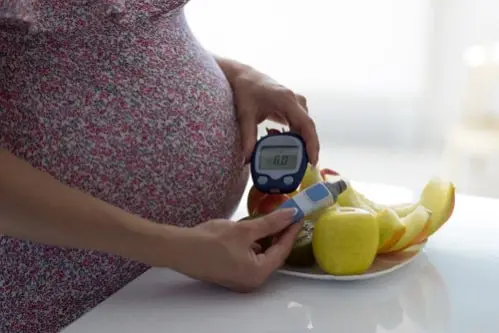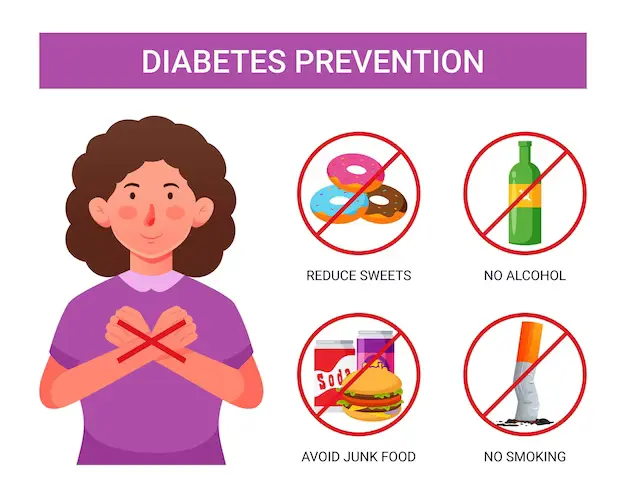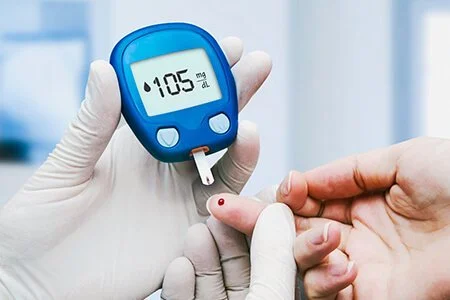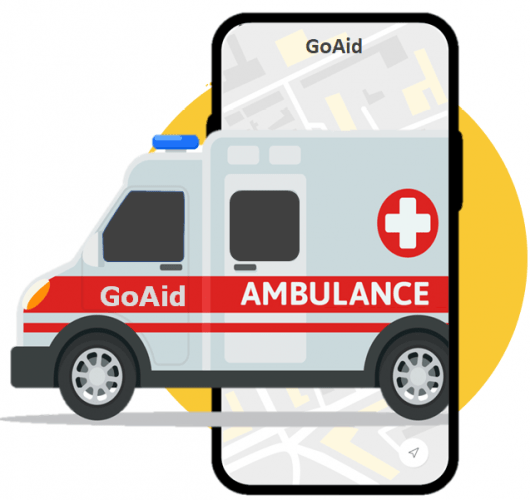Welcome to GoAid! We at GoAid Ambulance Services, always try to benefit our reader with important & educational blogs that will help them in their immense need. Today, we have presented you with the Symptoms of Diabetes. In entire world, there are hundreds of million people are affected with Diabetes, but many of them are not even realized that.
However, there are different types of Diabetes, this is why there might be some difficulties in understanding the symptoms of diabetes. This is why, we have added all the details about Symptoms of Diabetes including their types and treatment for related types of diabetes.
So, let’s start

How many types of Diabetes are there?
There are mainly 5 types of Diabetes can be observed normally:
- Type 1 Diabetes
- Autoimmune Disease: Type 1 diabetes is an autoimmune disease where the immune system attacks and destroys insulin-producing beta cells in the pancreas.
- Insulin Dependence: People with type 1 diabetes require daily insulin injections or an insulin pump to survive because their bodies cannot produce insulin.
- Onset in Childhood or Young Adulthood: Type 1 diabetes is usually diagnosed in children, teenagers, or young adults, although it can occur at any age.
- Symptoms: Symptoms of type 1 diabetes can include frequent urination, increased thirst, extreme hunger, unexplained weight loss, fatigue, and blurred vision.
- Management: Management of type 1 diabetes involves monitoring blood sugar levels, taking insulin as prescribed, following a balanced diet, exercising regularly, and attending regular medical check-ups.
- Type 2 Diabetes
- Insulin Resistance: Type 2 diabetes develops when the body becomes resistant to insulin or doesn’t produce enough insulin to maintain normal blood sugar levels.
- Lifestyle Factors: Risk factors for type 2 diabetes include being overweight or obese, having a sedentary lifestyle, having a family history of diabetes, and being over the age of 45.
- Gradual Onset: Type 2 diabetes often develops gradually over time, and many people may not experience noticeable symptoms in the early stages.
- Symptoms: Symptoms of type 2 diabetes can include increased thirst, frequent urination, fatigue, blurred vision, slow wound healing, and tingling or numbness in the hands or feet.
- Management: Management of type 2 diabetes involves lifestyle changes such as adopting a healthy diet, increasing physical activity, losing weight if necessary, monitoring blood sugar levels, taking oral medications or insulin as prescribed, and regular medical check-ups.
- Gestational Diabetes
- Occurs During Pregnancy: Gestational diabetes develops during pregnancy and usually resolves after childbirth.
- Increased Risk Factors: Risk factors for gestational diabetes include being overweight or obese, having a family history of diabetes, being over the age of 25, and certain ethnic backgrounds.
- Screening: Pregnant women are typically screened for gestational diabetes between 24 and 28 weeks of pregnancy using a glucose tolerance test.
- Complications: Gestational diabetes can increase the risk of complications during pregnancy and delivery, including preeclampsia, cesarean delivery, and macrosomia (large birth weight).
- Management: Treatment for gestational diabetes often involves monitoring blood sugar levels, following a healthy diet, exercising regularly, and, in some cases, taking insulin or other medications to control blood sugar levels.
- Monogenic Diabetes
- Genetic Mutation: Monogenic diabetes is cause by a mutation in a single gene that affects insulin production and blood sugar regulation.
- Rare Condition: Monogenic diabetes is rare, accounting for less than 2% of all diabetes cases.
- Types: There are different types of monogenic diabetes, including maturity-onset diabetes of the young (MODY) and neonatal diabetes mellitus.
- Diagnosis: Diagnosis of monogenic diabetes often requires genetic testing to identify the specific gene mutation.
- Treatment: Treatment for monogenic diabetes may differ from other types of diabetes and often involves personalized approaches tailored to the specific genetic mutation, which may include oral medications, lifestyle modifications, or insulin therapy.
- Secondary Diabetes
- Underlying Conditions: Secondary diabetes is caused by another medical condition or factor, such as pancreatitis, cystic fibrosis, hemochromatosis, or certain medications like corticosteroids.
- Symptoms: Symptoms of secondary diabetes may vary depending on the underlying cause but can include increased thirst, frequent urination, fatigue, and blurred vision.
- Management: Management of secondary diabetes involves treating the underlying condition or factor that is causing the diabetes, which may help improve blood sugar control.
- Risk Factors: Risk factors for secondary diabetes include having a medical condition or taking medications known to increase the risk of diabetes.
- Prevention: In some cases, it may be possible to prevent secondary diabetes by managing underlying conditions effectively and avoiding medications known to increase the risk of diabetes when alternatives are available. Regular medical check-ups and monitoring blood sugar levels may also help detect secondary diabetes early.

Symptoms of Diabetes – Type-Wise
We have added the complete set of Symptoms of Diabetes According to their type, means type-wise:
- Type 1 Diabetes
- Polyuria (Frequent Urination): Excess sugar in the blood pulls fluids from the tissues, leading to increased urination.
- Polydipsia (Increased Thirst): Dehydration resulting from frequent urination triggers a feeling of excessive thirst.
- Polyphagia (Increased Hunger): Without sufficient insulin to transport glucose into cells, the body’s cells are starved for energy, leading to increased hunger.
- Unexplained Weight Loss: Despite increased appetite and food intake, individuals with type 1 diabetes may experience weight loss due to the body’s inability to use glucose for energy, causing it to break down fat and muscle tissue for fuel.
- Fatigue: Without enough glucose entering cells, the body lacks the energy needed for daily activities, resulting in fatigue and weakness.
- Blurred Vision: High blood sugar levels can cause swelling in the lenses of the eyes, leading to blurred vision.
- Irritability or Mood Changes: Fluctuations in blood sugar levels can affect mood and cause irritability or mood swings.
- Nausea and Vomiting: In severe cases of untreated type 1 diabetes, high levels of ketones in the blood can lead to ketoacidosis, causing nausea and vomiting.
- Dry Mouth and Skin: Dehydration resulting from frequent urination can lead to dry mouth and skin.
- Fruity Breath Odor: In cases of diabetic ketoacidosis, the body produces ketones as a byproduct of fat breakdown, which can result in a fruity or acetone-like breath odor.
- Type 2 Diabetes
- Polyuria (Frequent Urination): Similar to type 1 diabetes, excess sugar in the blood leads to increased urination.
- Polydipsia (Increased Thirst): Dehydration from frequent urination triggers excessive thirst.
- Polyphagia (Increased Hunger): Despite increased food intake, cells are starved for energy due to insulin resistance, leading to increased hunger.
- Unexplained Weight Loss or Weight Gain: Weight changes can occur in type 2 diabetes due to insulin resistance, increased hunger, and changes in metabolism.
- Fatigue: Cells are unable to effectively use glucose for energy, leading to fatigue and weakness.
- Blurred Vision: High blood sugar levels can cause changes in vision due to fluid imbalances in the eyes.
- Slow Wound Healing: High blood sugar levels can impair circulation and the body’s ability to heal wounds, leading to slow healing.
- Tingling or Numbness in Hands or Feet: Elevated blood sugar levels can damage nerves over time, leading to peripheral neuropathy characterized by tingling, numbness, or pain in the hands and feet.
- Recurrent Infections: High blood sugar levels can weaken the immune system, increasing the risk of infections such as urinary tract infections, yeast infections, and skin infections.
- Darkened Skin Patches (Acanthosis Nigricans): Some individuals with type 2 diabetes may develop darkened patches of skin, particularly in the folds and creases of the body, due to insulin resistance.
- Gestational Diabetes
- Increased Thirst and Urination: Similar to other types of diabetes, gestational diabetes can cause increased thirst and frequent urination.
- Fatigue: Fatigue may occur due to hormonal changes and fluctuations in blood sugar levels.
- Nausea and Vomiting: Some women with gestational diabetes may experience nausea and vomiting, particularly in the first trimester.
- Blurred Vision: High blood sugar levels can lead to changes in vision during pregnancy.
- Recurrent Infections: Pregnant women with gestational diabetes may be more prone to urinary tract infections and yeast infections.
- Monogenic Diabetes
- Variable Symptoms: Symptoms of monogenic diabetes can vary depending on the specific genetic mutation involved.
- Familial History: Monogenic diabetes may have a familial pattern, with multiple family members affected by similar symptoms.
- Maturity-Onset Diabetes of the Young (MODY): MODY typically presents with mild hyperglycemia and may be mistaken for type 1 or type 2 diabetes.
- Neonatal Diabetes Mellitus: Neonatal diabetes mellitus presents within the first six months of life and is characterized by persistent hyperglycemia.
- Other Features: Some forms of monogenic diabetes may be associated with additional features such as developmental delays, neurologic abnormalities, or renal problems.
- Secondary Diabetes
- Symptoms of Underlying Condition: Symptoms of secondary diabetes can vary depending on the underlying condition or factor causing the diabetes.
- Polyuria and Polydipsia: Frequent urination and increased thirst may occur as a result of elevated blood sugar levels.
- Weight Changes: Weight changes may occur depending on the underlying cause of secondary diabetes.
- Fatigue: Fatigue may result from hormonal imbalances or complications related to the underlying condition.
- Other Associated Symptoms: Symptoms of secondary diabetes may overlap with symptoms of the underlying condition or factor, such as those associated with pancreatitis, cystic fibrosis, or the use of certain medications like corticosteroids.
ALSO READ:- How to cure diabetes permanently?
Treatment of Diabetes – Type-Wise
We have added the complete set of treatment of Diabetes according to their relatable type:
- Type 1 Diabetes
- Insulin Therapy: Since the body produces little to no insulin in type 1 diabetes, insulin replacement therapy is essential. This typically involves multiple daily insulin injections or continuous insulin infusion through an insulin pump.
- Blood Sugar Monitoring: Regular monitoring of blood sugar levels using a glucose meter is necessary to adjust insulin doses and maintain blood sugar levels within target ranges.
- Carbohydrate Counting: Patients learn to count carbohydrates in their meals to match insulin doses, helping to control blood sugar levels.
- Healthy Diet: Following a balanced diet rich in fruits, vegetables, whole grains, lean proteins, and healthy fats helps manage blood sugar levels and overall health.
- Regular Exercise: Engaging in regular physical activity helps improve insulin sensitivity, lower blood sugar levels, and manage weight.
- Type 2 Diabetes
- Lifestyle Modifications: Initial treatment often involves lifestyle changes such as adopting a healthy diet, increasing physical activity, losing weight if necessary, and quitting smoking.
- Oral Medications: For some people with type 2 diabetes, oral medications may be prescribed to help lower blood sugar levels by improving insulin sensitivity, decreasing glucose production in the liver, or increasing insulin production in the pancreas.
- Injectable Medications: In cases where oral medications are not sufficient, injectable medications such as GLP-1 receptor agonists or insulin may be prescribed to help control blood sugar levels.
- Blood Sugar Monitoring: Regular monitoring of blood sugar levels may be recommended to track progress and adjust treatment plans as needed.
- Medical Check-ups: Regular medical check-ups with healthcare providers are important for monitoring blood sugar levels, assessing complications, and adjusting treatment plans.
- Gestational Diabetes
- Blood Sugar Monitoring: Pregnant women with gestational diabetes may be advised to monitor their blood sugar levels regularly using a glucose meter.
- Healthy Diet: Following a balanced diet that includes complex carbohydrates, lean proteins, healthy fats, and plenty of fruits and vegetables helps manage blood sugar levels during pregnancy.
- Physical Activity: Engaging in regular physical activity as recommended by healthcare providers helps control blood sugar levels and promotes overall health during pregnancy.
- Insulin Therapy: In some cases, insulin therapy may be necessary to control blood sugar levels during pregnancy, especially if diet and exercise alone are not sufficient.
- Medical Supervision: Close monitoring and regular medical check-ups with healthcare providers are essential to ensure the health of both the mother and the baby during pregnancy.
- Monogenic Diabetes
- Genetic Testing: Genetic testing may be recommended to diagnose specific mutations associated with monogenic diabetes.
- Personalized Treatment: Treatment for monogenic diabetes is often personalized based on the specific genetic mutation involved.
- Medication: Depending on the type of monogenic diabetes and its effects on insulin production and blood sugar regulation, oral medications or insulin therapy may be prescribed.
- Lifestyle Modifications: Lifestyle changes such as following a healthy diet, engaging in regular physical activity, and maintaining a healthy weight are important components of managing monogenic diabetes.
- Regular Monitoring: Regular monitoring of blood sugar levels and ongoing medical supervision are necessary to adjust treatment plans and prevent complications associated with monogenic diabetes.
- Secondary Diabetes

- Treatment of Underlying Condition: The primary focus in treating secondary diabetes is addressing the underlying medical condition or factor causing the diabetes.
- Medication Adjustment: Depending on the underlying condition and its effects on blood sugar levels, adjustments to medications may be necessary to manage secondary diabetes.
- Lifestyle Modifications: Lifestyle changes such as adopting a healthy diet, increasing physical activity, and maintaining a healthy weight can help manage blood sugar levels and overall health.
- Blood Sugar Monitoring: Regular monitoring of blood sugar levels may be recommended to track progress and adjust treatment plans as needed.
- Medical Supervision: Close monitoring and regular medical check-ups with healthcare providers are important for managing secondary diabetes and preventing complications associated with the underlying condition.
Conclusion: What are Symptoms of Diabetes?
In conclusion, the symptoms of diabetes vary depending on the type and stage of the condition. Common symptoms include frequent urination, increased thirst, unexplained weight loss or gain, fatigue, blurred vision, slow wound healing, tingling or numbness in the hands or feet, and recurrent infections.
These symptoms may develop gradually or suddenly and can significantly impact an individual’s daily life and overall health. Early detection and management of diabetes symptoms are crucial to prevent complications such as cardiovascular disease, kidney damage, nerve damage, and vision problems. Seeking prompt medical attention and adopting healthy lifestyle habits are essential for effective diabetes management.







